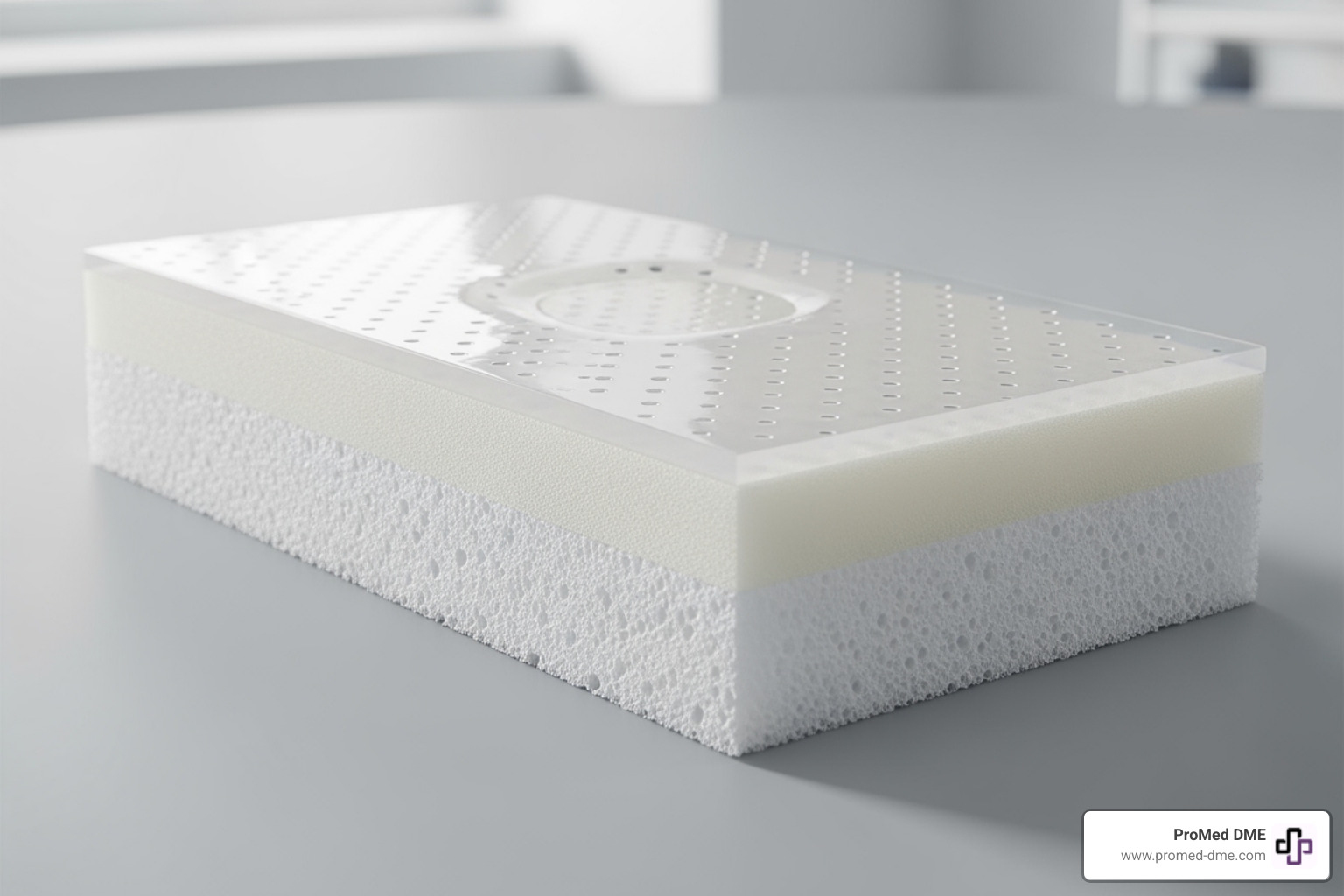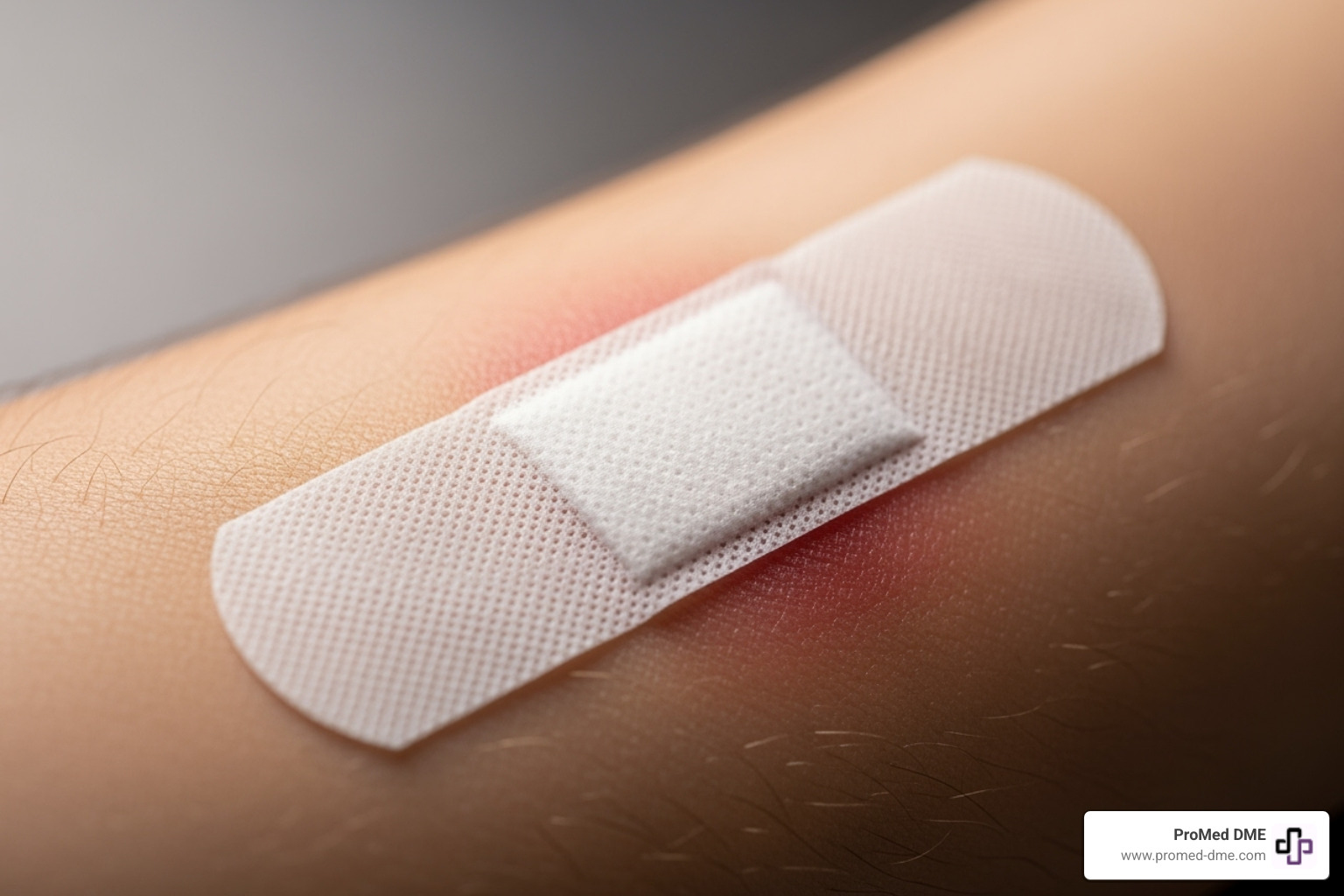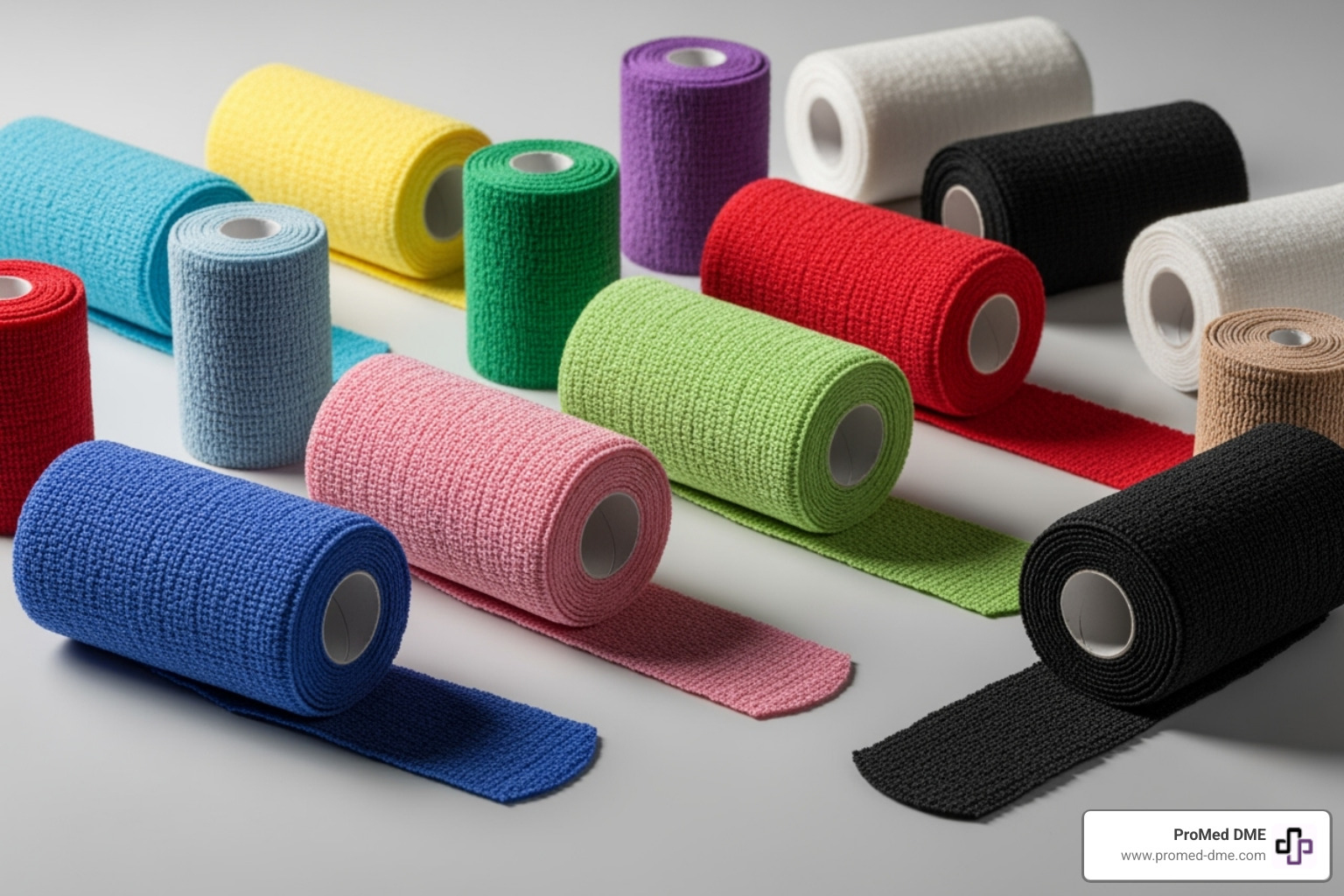Open Wounds: The Art of Timely Bandage Changes

How often should you change bandages on an open wound? Managing open wounds effectively is crucial for preventing infections and ensuring a smooth healing process. Here's a quick answer for the most common scenarios:
- Daily Changes: For general wounds that are healing without complications.
- Immediate Change: If the bandage becomes wet, soiled, or there's notable fluid leakage.
- Twice a Day: In early healing stages, especially for wounds with more discharge.
Tending to wounds may seem straightforward, but it's actually an art that combines understanding of medical principles with attentive care. By staying informed about when and how to change bandages, you can significantly reduce the risk of infections and foster better healing.
Wounds naturally bring discomfort and worry, particularly for those already managing chronic health issues. To ease this journey, advancements in wound care have refined the ways we protect open wounds and support the body’s natural healing processes.
Taking small steps—like routinely inspecting the wound, maintaining hand hygiene, and using the right dressing—can make a big difference in the winding road to recovery.

Important how often should you change bandages on an open wound terms:- alginate wound dressing- do bandage infected wound- mepilex dressing
How Often Should You Change Bandages on an Open Wound?
When it comes to how often you should change bandages on an open wound, several factors come into play. The frequency isn't one-size-fits-all, so let's break it down.
Factors Influencing Bandage Change Frequency
1. Wound Type
Different wounds require different care. For example:
- Surgical wounds: These are usually closed and have less exudate, so they might only need a change every two days.
- Chronic or infected wounds: These often need more frequent changes due to higher exudate levels.
2. Exudate Levels
The amount of fluid a wound produces is key.
- High exudate wounds: Change the bandage at least daily, or whenever the dressing is saturated.
- Moderate exudate wounds: Change every 2-3 days.
- Low exudate wounds: Weekly or less, unless the dressing is soiled.
3. Dressing Type
Different dressings have different lifespans:
- Wet-to-dry dressings: Need changing every 4-6 hours.
- Hydrocolloid dressings: Can last up to 7 days.
4. Healthcare Provider's Advice
Always consult your healthcare provider for personalized guidance. They know your wound best and can tailor advice to your specific situation.
Signs It's Time to Change Your Bandage
Knowing when to change your bandage is just as important as knowing how often. Here are some clear indicators:
Bleed-through: If fluids start to soak through, it's time for a change. This can increase the risk of the bandage sticking to the wound.
Soiled Dressing: If the dressing is visibly dirty, swap it out to prevent infection.
Fluid Leakage: Any sign of excess fluid around the dressing area means it's time for a fresh bandage.

Keeping an eye out for these signs ensures the wound stays clean and promotes healing. Timely bandage changes are a critical part of effective wound care.
Next, we'll explore best practices for changing bandages to maximize healing and comfort.
Best Practices for Changing Bandages
When caring for an open wound, following the right steps ensures optimal healing. Let's walk through a step-by-step guide to changing bandages effectively.
Step-by-Step Guide to Changing Bandages
Hand Hygiene
Before you even touch a bandage, wash your hands thoroughly with soap and water. This simple step helps prevent infection. If soap and water aren't available, use an alcohol-based hand sanitizer.
Cleaning the Wound
Once your hands are clean, it's time to focus on the wound:
Gently remove the old bandage: Be careful not to disturb any healing tissue. If the bandage sticks, moisten it with saline or clean water to ease removal.
Clean the wound: Use mild soap and water or a saline solution. Avoid harsh chemicals like hydrogen peroxide, as they can damage new tissue. Pat the area dry with a clean towel.
Applying New Dressing
Now that the wound is clean, let's apply a fresh bandage:
Apply a thin layer of antibiotic ointment: This step provides a barrier against bacteria and helps keep the wound moist, promoting faster healing.
Choose the right dressing: Depending on the wound type and exudate level, select a suitable bandage. For example, use hydrogel dressings for dry wounds and foam dressings for wounds with moderate exudate.
Secure the dressing: Ensure the dressing covers the entire wound and a bit of the surrounding skin. Use medical tape or a secondary bandage to hold it in place, but avoid wrapping too tightly, which can restrict blood flow.
Moisture Management
Keeping the wound properly moist is crucial:
Moist, not wet: The wound should be moist under the dressing, but not overly wet. Too much moisture can lead to skin maceration, where the skin becomes soft and breaks down.
Use appropriate dressings: Some dressings, like hydrocolloid, help maintain the right moisture level by absorbing excess fluids while keeping the wound bed moist.
Avoiding Irritation
Finally, ensure the wound and surrounding skin remain irritation-free:
Watch for allergic reactions: Some people are sensitive to adhesives. If you notice redness or itching, consider using a latex-free bandage or gauze with tape.
Change dressings as needed: Regular changes prevent buildup of fluids and reduce the risk of infection. Keep an eye out for signs that it's time for a change, like bleed-through or a soiled dressing.
By following these best practices, you can promote faster healing and reduce the risk of complications. Next, we'll discuss common mistakes to avoid in the bandage-changing process.
Common Mistakes to Avoid
When it comes to caring for open wounds, avoiding common pitfalls can make a significant difference in healing outcomes. Here are some mistakes you should steer clear of to ensure effective wound care.
Leaving the Bandage on Too Long
One of the most frequent mistakes is leaving a bandage on for too long. When a bandage stays on past its usefulness, it can lead to several issues:
- Increased risk of infection: Old bandages can harbor bacteria, which may infect the wound.
- Adhesion to the wound: If a bandage becomes too dry, it might stick to the healing tissue, causing damage when removed.
Tip: Change the bandage at least once a day or whenever it becomes wet or dirty. This practice helps keep the wound clean and promotes healing.
Improper Cleaning
Proper wound cleaning is crucial, yet it's easy to make mistakes in this step. Here’s what to avoid:
- Skipping the cleaning step: Never apply a new bandage without cleaning the wound first. Skipping this step can trap debris and bacteria under the dressing.
- Using the wrong cleaning agents: Harsh chemicals like hydrogen peroxide and iodine might seem effective, but they can actually harm new tissue and slow healing.
Tip: Stick to mild soap and water or saline solutions to clean wounds. These options are gentle and effective.
Using Harsh Chemicals
While it might be tempting to use strong antiseptics, they can do more harm than good:
- Damaging new tissue: New skin is sensitive and can be damaged by harsh chemicals.
- Delaying healing: Using strong antiseptics can slow down the natural healing process.
Tip: Avoid harsh chemicals and instead rely on simple cleaning methods like soap and water. This approach is both safe and effective for wound care.
By avoiding these common mistakes, you can significantly improve your wound care routine and help the healing process. Up next, we'll answer some frequently asked questions about bandage changes to further guide you in managing open wounds effectively.
Frequently Asked Questions about Bandage Changes
How long can you leave a dressing on an open wound?
When it comes to how long you can leave a dressing on an open wound, the answer depends on several factors. Generally, you should change the dressing every two days. This timeframe helps maintain cleanliness and reduces the risk of infection. However, always follow your healthcare provider's advice, as they will consider your specific wound type and healing progress.
Different dressing types have varying change frequencies. For instance, a hydrocolloid dressing might be left on for up to a week, while a wet-to-dry dressing needs to be changed every 4-6 hours. Always consider the dressing type and the wound's specific needs.
Can you change wound dressing too often?
Yes, changing a wound dressing too often can disrupt the healing process. Each time you remove a dressing, you risk disturbing new tissue growth. However, if the wound produces a lot of fluid (exudate), more frequent changes might be necessary to manage moisture levels and prevent infection.
Exudate management is key. For wounds with high exudate, daily changes might be essential. On the other hand, wounds with minimal exudate may only require changes every few days. It's crucial to balance between keeping the wound clean and allowing it to heal undisturbed.
How long should an open wound be covered?
An open wound should generally be covered for five days or more, depending on its size and severity. Keeping a wound covered helps maintain a moist environment, which can speed up healing and reduce scarring.
Covered wounds tend to heal faster than uncovered ones. Scientific studies show that a moist wound environment promotes cell growth and reduces the risk of infection. However, monitor for any signs of infection or irritation and adjust the covering strategy as needed. Always consult with your healthcare provider to determine the best approach for your specific situation.
By understanding these guidelines, you can better manage your wound care routine and promote effective healing. Next, let's explore some best practices for changing bandages to ensure optimal wound care.
Conclusion
At ProMed DME, we understand that wound care is not just about covering an injury—it's about facilitating healing, preventing infection, and ensuring comfort. That's why we offer a wide range of quality products designed to meet the unique needs of every individual. Our commitment to providing exceptional service means that you can trust us to support you every step of the way in your wound care journey.
Our products are carefully selected to deliver optimal results. From highly absorbent gauze pads to flexible rolled gauze, we have the right solutions for each stage of healing. We also offer specialized bandages that cater to different exudate levels and dressing types, ensuring that your wound care is as effective and efficient as possible.

But it's not just about the products. Our dedicated team, including a nurse on staff, is here to provide guidance and support, ensuring that you have the knowledge and resources to manage your wound care confidently. We work with most insurance plans to minimize out-of-pocket expenses, and our free shipping service ensures that you receive your supplies quickly and conveniently.
Whether you're dealing with a minor scrape or a more complex wound, ProMed DME has the expertise and products to help you heal effectively. We invite you to explore our comprehensive selection of wound care supplies and find how we can assist you in achieving the best possible outcomes.
For more information on our products and services, please visit our wound care supplies page. We are committed to supporting you every step of the way, providing products that not only meet but exceed your expectations.
Related Resources & Articles
Stay informed with our informative blog posts.
Discover the ProMed Advantage
& Try Our Products
We offer free shipping and legendary customer service to ensure you receive the
best DME products for your needs.



